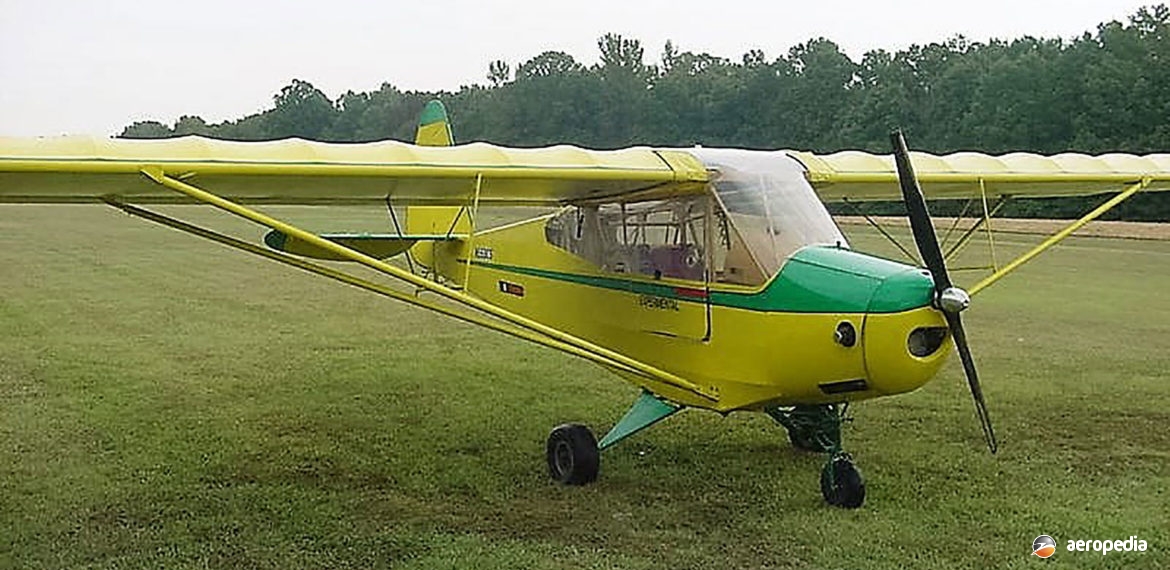Photograph:
An American registered Johnston Aviation Tiger Cub (Ultralightnews.com)
Country of origin:
United States of America
Description:
Single-seat light sport monoplane
Power Plant:
[Sport 2]
One 80 kw (100 hp) Continental O-200 four-cylinder horizontally-opposed air-cooled engine
Specifications:
- Wingspan: 10.05 m (33 ft)
- Length: 6.85 m (22 ft 6 in)
- Wing area: 15.32 m² (165 sq ft)
- Wing width folded: 1.98 m (6 ft 6 in)
- Never exceed speed: 209 km/h (130 mph)
- Cruising speed: 169 km/h (105 mph)
- Stalling speed full flap: 56 km/h (35 mph)
- Rate of climb: 244 m/min (800 ft/min)
- Take-off roll: 91 m (300 ft)
- Landing roll: 122 m (400 ft)
- G-limits: +5/-3G
- Glide ratio: 8 to 1
- Empty weight: 381 kg (840 lb)
- Loaded weight: 599 kg (1,320 lb)
History:
Like many ultralight aircraft in recent times, the Tiger Cub was designed to meet American FAR Part 103 regulations and was available in two basic models to meet amateur builder requirements. A range of engines could be installed, including the Hirth F-33, the Rotax 447 in the Tiger Cub UL, and the Continental O-200 and Rotax 912 in the Sport 2.
The aircraft was available from Johnston Aviation, which had facilities in New Cumberland, West Virginia and Canonsburg, Pennsylvania. The airframe was aluminium tube and gusset construction, with some chrome moly parts. A bent-tube package could be obtained to save welding. It was fabric covered. The wing could be folded for storage or placement on a trailer. The aircraft could accommodate pilots up to 1.98 m (6 ft 6 in) tall or 113 kg (250 lb).
First example of the type seen in Australia became 19-8141 (c/n JU 6-110303-3), registered on 8 June 2012 with Recreational Aviation Australia (RAA).

